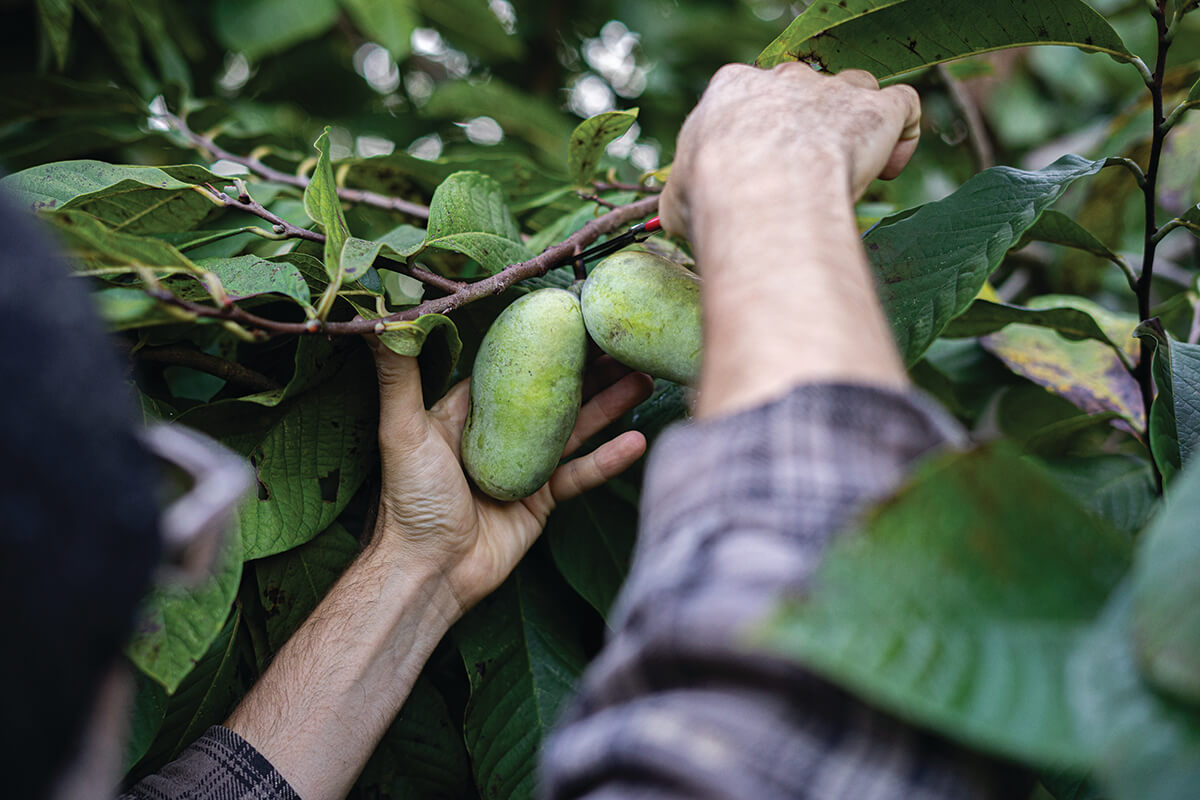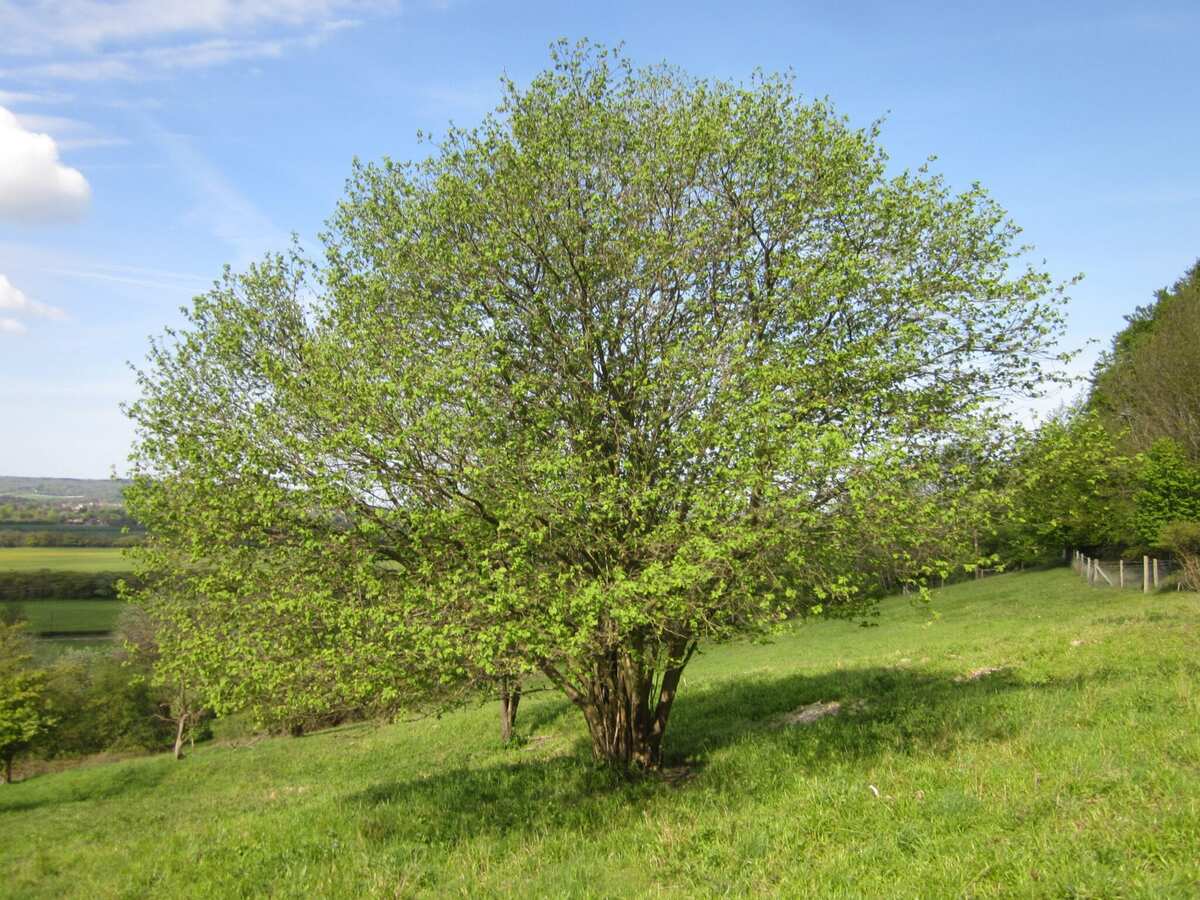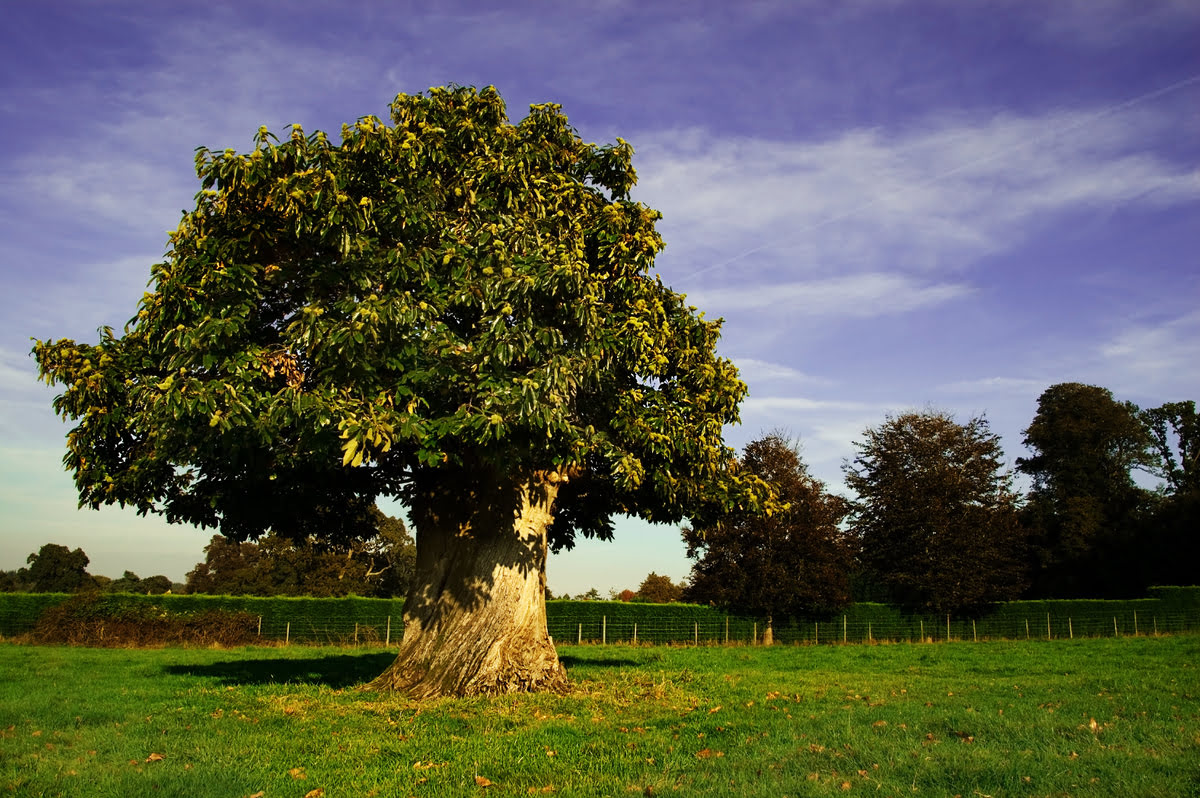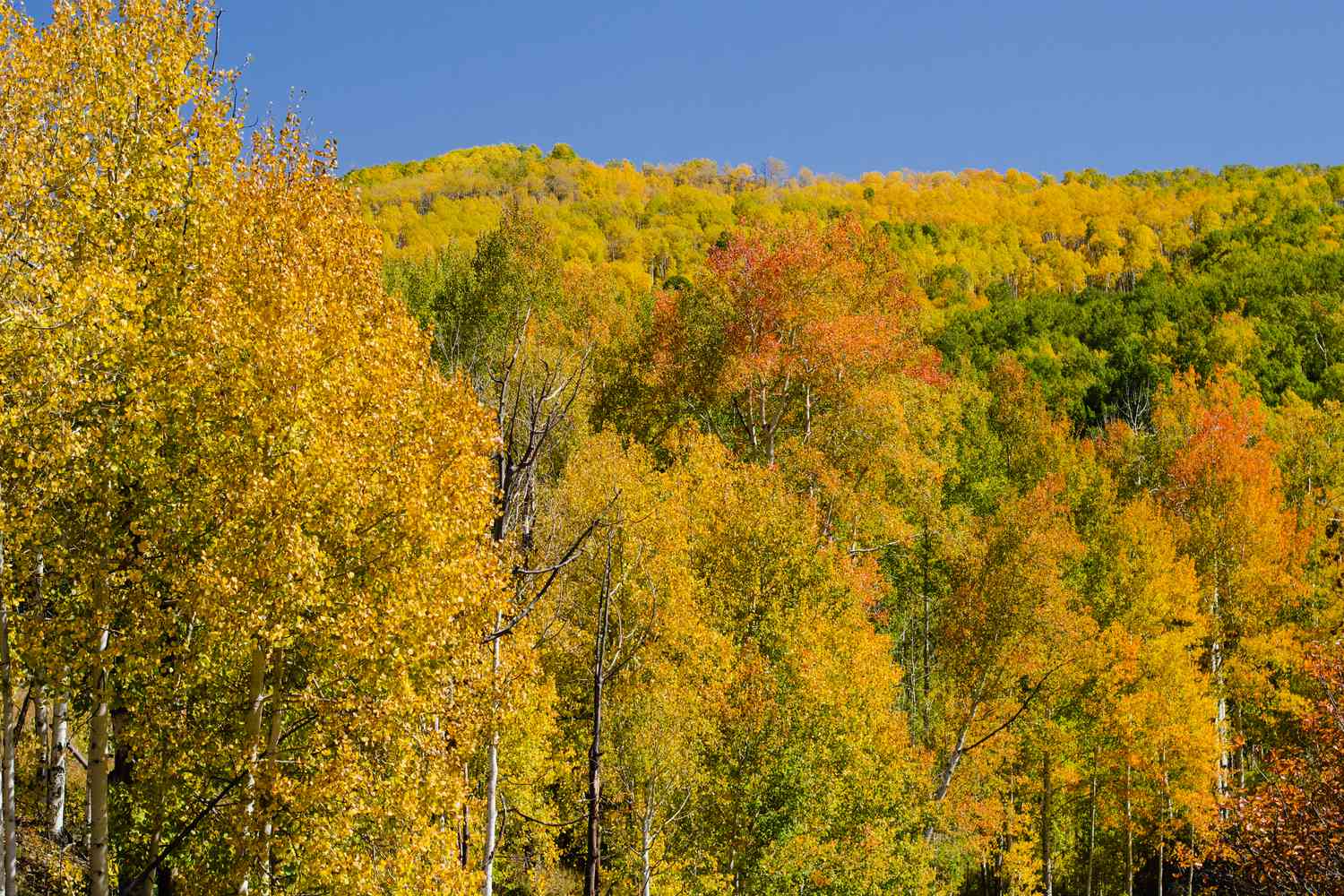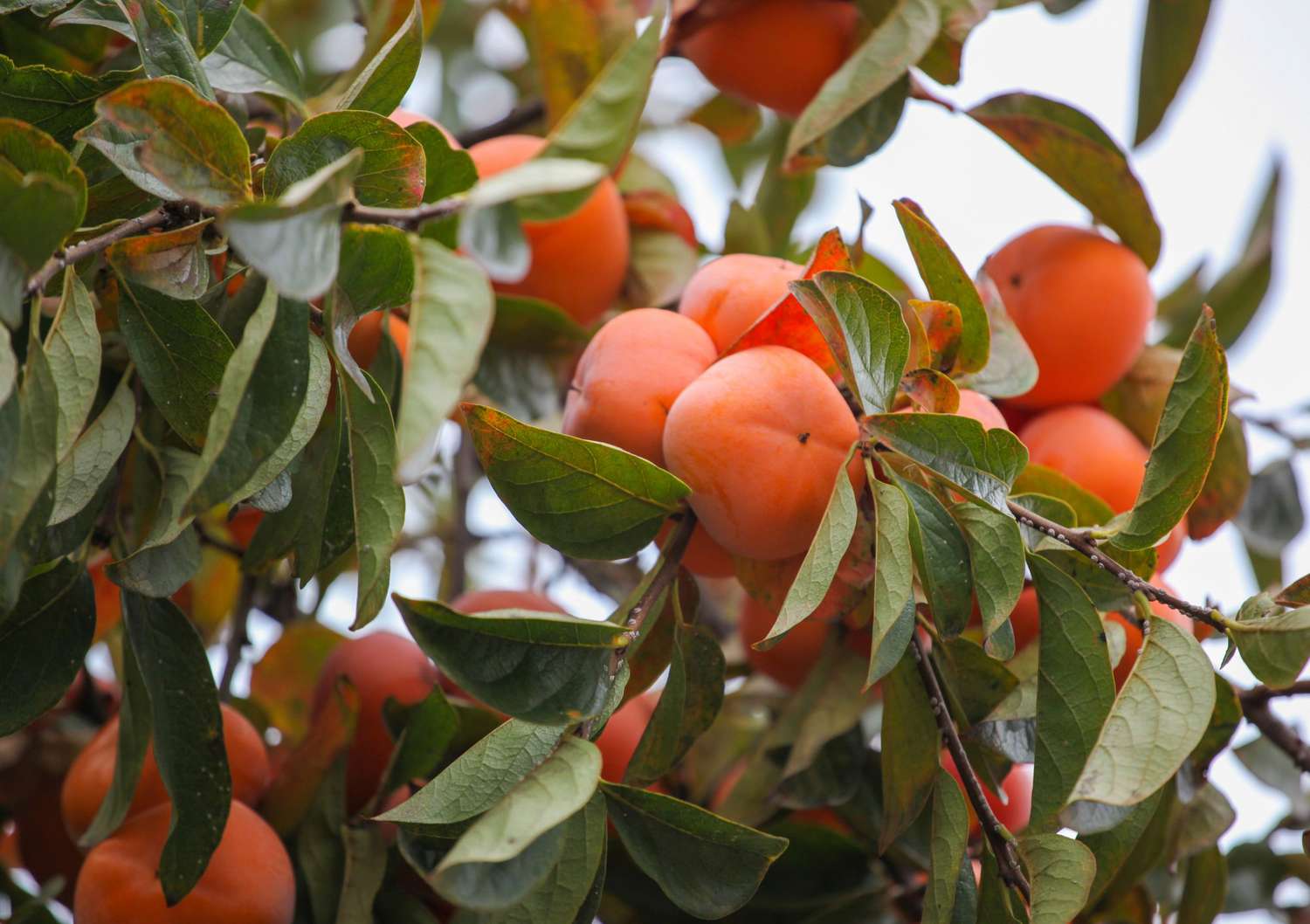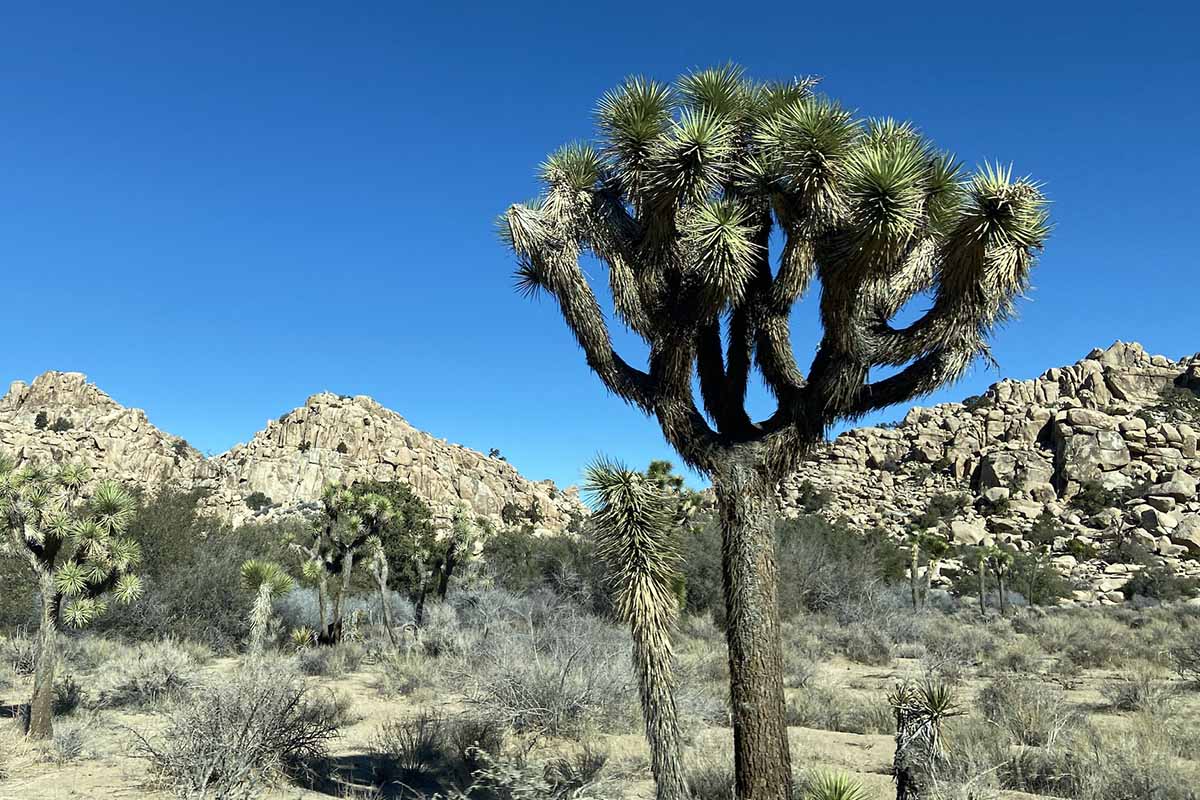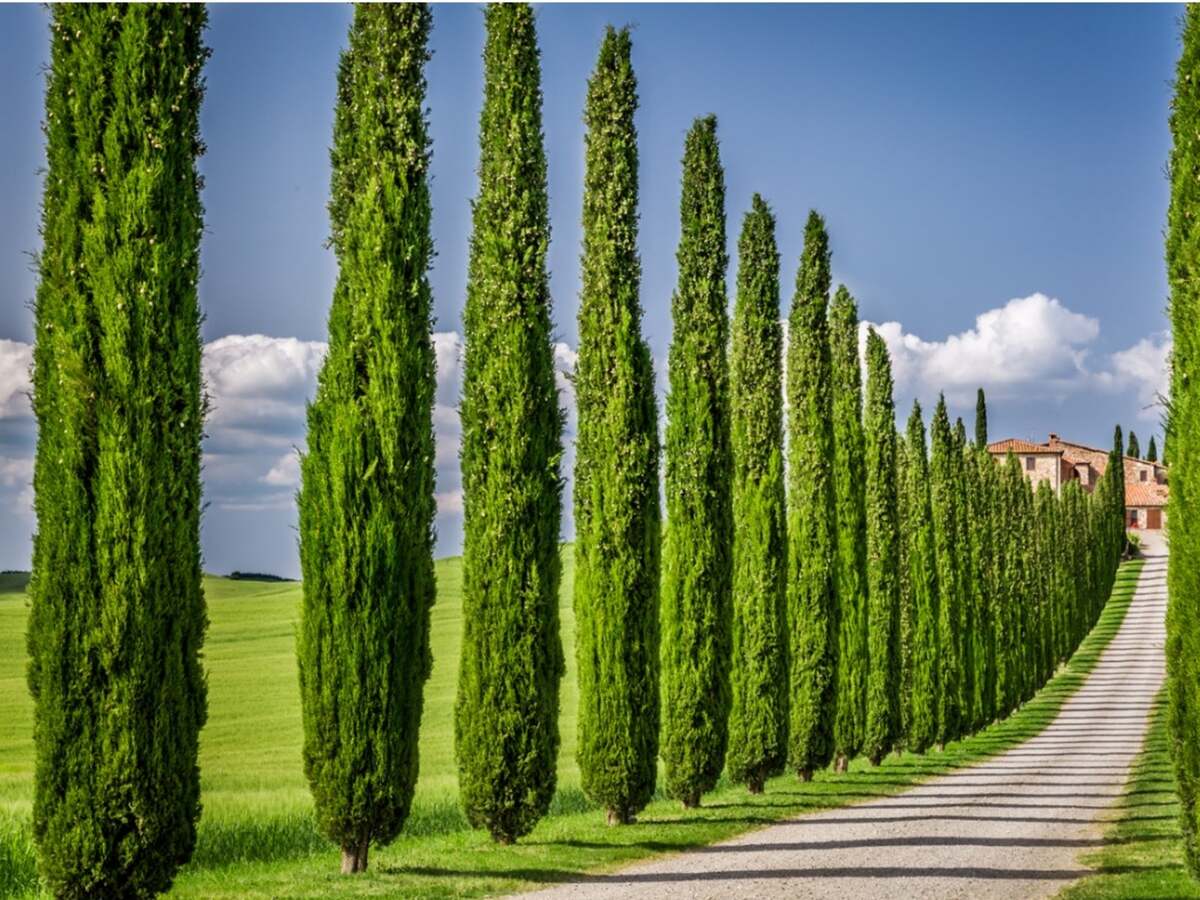Home>Types of Gardening>Ornamental Gardening>Where Do Banyan Trees Grow
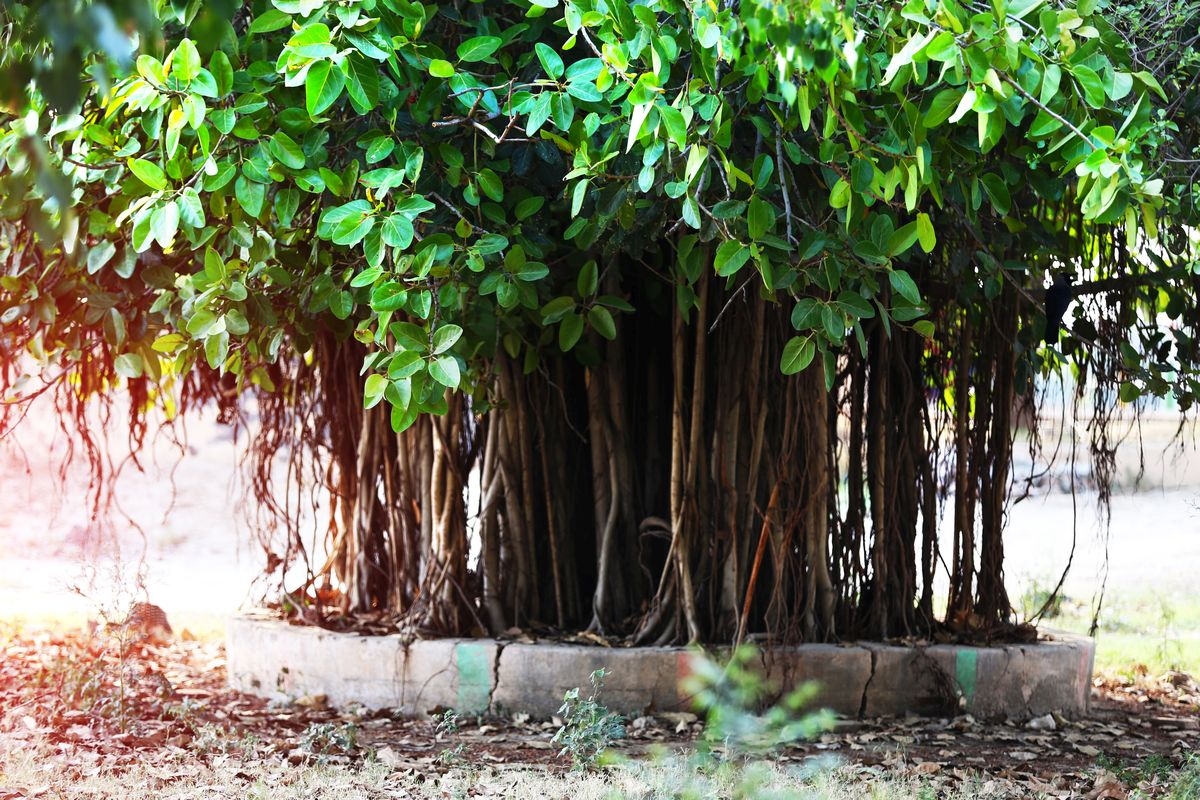

Ornamental Gardening
Where Do Banyan Trees Grow
Modified: January 22, 2024
Discover the ideal conditions for growing banyan trees with our comprehensive guide on ornamental gardening. Learn where banyan trees thrive and how to cultivate them in your garden.
(Many of the links in this article redirect to a specific reviewed product. Your purchase of these products through affiliate links helps to generate commission for Chicagolandgardening.com, at no extra cost. Learn more)
Table of Contents
Introduction
Welcome to the magical world of banyan trees! These majestic giants are known for their stunning beauty and impressive stature, making them a prized addition to any ornamental garden. With their sprawling canopies and unique aerial prop roots, banyan trees have captivated the imaginations of people around the globe. In this article, we will take a closer look at these incredible trees and explore their habitats and distribution.
A banyan tree, scientifically known as Ficus benghalensis, belongs to the fig family. It is renowned for its ability to create a breathtaking display with its extensive network of aerial roots that cascade down from its branches, making it a favorite among nature enthusiasts and gardeners alike.
One of the most fascinating aspects of banyan trees is their ability to grow and thrive in diverse environments. From the dense rainforests of Southeast Asia to the tropical landscapes of India and the subtropical regions of Florida, banyan trees have adapted to various climates and have become an integral part of the ecosystems in which they reside.
Moreover, banyan trees hold great significance in many cultural and religious traditions. In Hindu mythology, the banyan tree is considered sacred and often associated with wisdom and eternal life. It is believed to be the resting place of the deity Krishna and is considered a symbol of longevity and fertility.
In this article, we will delve into the diverse habitats and distribution of banyan trees, highlighting key regions where they can be found in abundance. So, join us on this journey as we uncover the enchanting world of banyan trees and discover the beauty they bring to ornamental gardens around the world.
Overview of Banyan Trees
Banyan trees are unique and fascinating trees that belong to the fig family, scientifically known as Ficus benghalensis. With their characteristic aerial roots and sprawling canopies, they have become a symbol of natural beauty and resilience.
One of the most distinctive features of banyan trees is their ability to produce aerial prop roots. These roots start as small, wiry tendrils that grow downwards from the branches towards the ground. Once they touch the earth, they root themselves and gradually become thick, woody prop roots. This process allows banyan trees to grow horizontally and gives them their iconic, picturesque appearance.
With their widespread and expansive canopies, banyan trees provide ample shade, making them perfect for creating sheltered areas in ornamental gardens. The leaves of banyan trees are large, leathery, and possess a deep green color, adding to their aesthetic appeal. These leaves create a dense shade, making them ideal for hot and tropical climates.
Banyan trees are known for their remarkable adaptability. They are capable of growing in various soil types, ranging from sandy to clayey, as long as the soil is not waterlogged. They prefer a well-drained environment and thrive in areas with high humidity.
In addition to their physical attributes, banyan trees serve as hosts for a variety of organisms. Their branches and aerial roots provide habitats for birds, insects, and other epiphytic plants, contributing to the overall biodiversity of their ecosystems.
Another fascinating characteristic of banyan trees is their ability to produce figs. Although they are known as “strangler figs,” they are not true stranglers. The figs are actually a type of inflorescence called a syconium, which contains many tiny flowers. These figs attract birds that consume them, thus aiding in the dispersal of their seeds. The figs themselves are not only a valuable food source for wildlife but are also edible for humans in some cultures.
To sum up, banyan trees are remarkable species that have captivated people with their striking appearance, adaptability, and ecological importance. Their aerial roots, expansive canopies, and ability to host other organisms make them a standout choice for ornamental gardens, adding both beauty and biodiversity to any landscape.
Habitat of Banyan Trees
Banyan trees are renowned for their ability to adapt and thrive in a wide range of habitats. They can be found in both tropical and subtropical regions around the world. These trees have a remarkable tolerance for different soil types and climatic conditions, allowing them to establish themselves in diverse ecosystems.
One of the key factors for the habitat of banyan trees is the availability of sunlight. They prefer bright, direct sunlight for optimal growth. However, they can also tolerate partial shade, which makes them suitable for gardens with varying degrees of sun exposure.
In terms of soil preferences, banyan trees can grow in a variety of soil types, including sandy, loamy, and clayey soil. The soil should have good drainage properties to prevent waterlogging, as excessive moisture can hinder their growth. Banyan trees are also tolerant of alkaline and acidic soil conditions, further expanding their habitat range.
One significant aspect of banyan trees is their ability to withstand strong winds and adverse weather conditions. Their strong and extensive root systems provide stability and enable them to endure tropical storms and cyclones. This resilience makes banyan trees well-suited for coastal regions and areas prone to high winds.
While banyan trees are adaptable to various climates, they thrive in areas with high humidity. This makes them commonly found in tropical rainforests, where the humidity levels are consistently high throughout the year. The abundance of moisture supports their vigorous growth and enables them to establish new aerial roots and branches.
Banyan trees also prefer areas with an ample supply of water. They can tolerate periodic flooding, but they do not thrive in waterlogged conditions. They require regular irrigation during dry spells to ensure adequate hydration, especially during the initial stages of growth.
Due to their adaptability, banyan trees can be found in a wide range of habitats across the world. From the lush rainforests of Southeast Asia to the subtropical regions of Florida, banyan trees have successfully established their presence in various ecosystems, creating stunning displays and adding a touch of natural beauty to their surroundings.
Distribution of Banyan Trees
Banyan trees, with their adaptability to different environments, have established a widespread distribution across various continents. They are native to tropical and subtropical regions, particularly in Asia, but can also be found in other parts of the world.
One of the primary regions where banyan trees are found in abundance is Asia. They are native to India, where they hold cultural and religious significance. These trees can be seen in parks, gardens, and even along roadsides, creating a picturesque landscape. Banyan trees are also prevalent in other parts of Asia, including Bangladesh, Sri Lanka, Nepal, and Myanmar, adding to the natural beauty of these countries.
Furthermore, Southeast Asia is another region known for its thriving population of banyan trees. Countries such as Thailand, Malaysia, Indonesia, and the Philippines boast dense forests where these trees grow and flourish. The tropical climate and high humidity in these areas provide the ideal conditions for the growth of banyan trees.
Banyan trees have also found their way to South America, specifically in countries like Brazil and Colombia. They were introduced to these regions due to their ornamental value and ability to thrive in the tropical climates prevalent in these areas. In places like the Amazon rainforest, banyan trees contribute to the rich biodiversity of the region and provide habitat for various animal species.
In addition, banyan trees have been successfully introduced to regions outside of Asia and South America. In Florida, USA, these trees have adapted well to the subtropical climate. They can be found in various parks, botanical gardens, and even private properties, contributing to the lush greenery of the state.
Overall, the distribution of banyan trees stretches across continents, from their native lands in Asia to distant destinations in South America and beyond. Their ability to adapt to diverse climates and soil conditions has allowed them to establish a significant presence in many regions, enriching the natural landscapes and providing a unique touch to ornamental gardens worldwide.
Banyan Trees in Asia
Asia is the native home of the banyan tree, and it holds great cultural and religious significance in many countries across the continent. These majestic trees can be found gracing parks, temples, and historical sites, adding to the natural beauty and aura of these places.
India, in particular, is known for its deep connection with banyan trees. The Indian Banyan (Ficus benghalensis) is the national tree of India and is often revered and considered sacred. It is believed that Lord Krishna himself resided under a banyan tree. In many Indian villages, you will find banyan trees serving as gathering places, with people seeking shade and relaxation beneath their sprawling canopies.
Beyond India, banyan trees can be found in various other parts of Asia. In Bangladesh, the Sonargaon region is famous for its ancient banyan tree called the “Baobazar Vat.” This tree is believed to be over 500 years old and serves as a popular tourist attraction.
In Sri Lanka, banyan trees are abundant, particularly in rural areas. The Sacred Bo Tree in Anuradhapura is a revered banyan tree believed to be one of the oldest historically documented trees in the world. Its preservation and worship reflect the cultural significance that banyan trees hold in the country.
Thailand is another country where banyan trees can be found in abundance. They are often planted around temples and associated with spirituality. The famous Wat Mahathat temple in Ayutthaya boasts a striking image of a Buddha’s face engulfed by the roots of a magnificent banyan tree, creating a surreal and awe-inspiring sight.
Indonesia, with its diverse tropical landscapes, is also home to numerous banyan trees. Bali, in particular, is known for its iconic banyan trees that line the streets, forming natural canopies and providing shade to locals and tourists alike.
Indeed, across Asia, banyan trees have become an integral part of the cultural and natural landscapes. They are not only revered for their beauty but also for their ability to create a sense of serenity and connection to nature. These trees continue to be cherished and protected, carrying forward their legacy and significance for generations to come.
Banyan Trees in India
India, the birthplace of banyan trees, is a country where these majestic giants hold immense cultural, religious, and ecological significance. Revered for their grandeur and beauty, banyan trees are deeply embedded in Indian folklore, mythology, and daily life.
One of the most iconic banyan trees in India can be found in Kolkata, known as the Great Banyan Tree. This colossal tree is over 250 years old and covers an area of about 14,500 square meters, making it one of the largest trees in the world. It has a mesmerizing network of aerial roots that cascade down from its branches, giving it an ethereal and enchanting appearance.
In India, banyan trees are often associated with religious beliefs and rituals. It is believed that Lord Krishna, an important deity in Hinduism, rested under the shade of a banyan tree. Many temples throughout India, like the famous Guruvayur Temple in Kerala, are adorned with banyan trees, which serve as sacred places for prayers and meditation.
In addition to their religious significance, banyan trees are cherished for their ability to provide shade and shelter. Villages and towns across India have common areas, known as “chaupals,” where people gather in the shade of banyan trees for informal meetings, storytelling, and community events.
Furthermore, banyan trees play a vital role in the Indian ecosystem. They provide habitat and food for a wide variety of bird species, including parrots, mynas, and barbets. The dense canopies of banyan trees also offer shelter to other animals, such as squirrels and monkeys.
As a testament to their cultural and ecological significance, banyan trees in India are protected by law. It is illegal to cut down or harm these sacred trees without proper authorization. The government and local communities actively work to preserve and conserve these natural treasures.
From the ancient temples of Varanasi to the serene countryside of Kerala, banyan trees can be found gracing the landscapes of India. These magnificent trees continue to inspire awe and reverence, reminding us of the deep connection between nature, culture, and spirituality that is deeply rooted in Indian society.
Banyan Trees in Southeast Asia
Southeast Asia is a region renowned for its lush and diverse tropical landscapes, and banyan trees are an integral part of its natural beauty. These majestic giants can be found throughout countries such as Thailand, Malaysia, Indonesia, and the Philippines, adding to the enchantment of the region.
In Thailand, banyan trees are often associated with spirituality and are considered sacred. Many temples, such as Wat Mahathat in Ayutthaya, feature striking images of Buddha engulfed by the roots of magnificent banyan trees, creating a surreal and awe-inspiring sight. These trees are also planted along village roads and are cherished for their shade, providing respite from the tropical heat.
In Malaysia, banyan trees can be found in abundance, particularly in rainforest regions. These trees, with their extensive networks of aerial roots, contribute to the intricate web of life in the rainforest ecosystem. The iconic Batu Caves near Kuala Lumpur is home to a prominent banyan tree that stands as a symbol of perseverance and strength.
Indonesia, with its vast archipelago, is home to numerous banyan trees. Bali, in particular, is known for its beautifully adorned banyan trees lining the streets, creating natural canopies that provide shade to locals and visitors alike. These trees add to the island’s serene and tropical ambiance.
In the Philippines, banyan trees are celebrated for their unique beauty and cultural significance. They can be found in various parks and gardens, offering a tranquil escape from bustling cityscapes. Rizal Park in Manila is home to several magnificent banyan trees, providing a serene retreat within the heart of the bustling capital.
Throughout Southeast Asia, banyan trees serve as hosts for a variety of organisms, contributing to the region’s rich biodiversity. Their canopy shelters birds, insects, and epiphytic plants, creating a mini-ecosystem within their branches. The fruits, known as figs, produced by banyan trees are a valuable food source for wildlife, further enhancing their ecological importance.
Indeed, banyan trees in Southeast Asia mesmerize with their striking beauty and ecological significance. As guardians of the tropical rainforests and cultural landmarks, these magnificent trees continue to captivate the hearts and minds of people, while providing essential habitats for various forms of life in this vibrant and diverse region.
Banyan Trees in South America
While banyan trees are most commonly associated with Asia, these magnificent trees have also found their way to South America, where they have become an integral part of the region’s natural landscapes. South America’s tropical climate and abundant rainforests provide favorable conditions for banyan trees to thrive and make a lasting impact.
Brazil, the largest country in South America, is home to a diverse range of ecosystems, including the dense Amazon rainforest. In this vast expanse of greenery, banyan trees can be found, contributing to the region’s biodiversity. These trees serve as hosts for numerous epiphytic plants, providing a habitat for various lianas, orchids, and bromeliads.
In Colombia, banyan trees can be found in the lush landscapes of the Amazon Basin and other tropical regions. They form an integral part of the country’s rich natural heritage. The unique aerial roots and expansive canopies of banyan trees create a striking presence in the rainforest, offering shade and shelter to countless organisms.
The presence of banyan trees in South America not only contributes to the ecological balance but also enhances the aesthetic appeal of the region. Their sprawling canopies and intricate root systems create a sense of wonder and enchantment, making them a popular sight among nature enthusiasts and travelers.
These trees play a vital role in supporting the delicate balance of the rainforest ecosystem. The dense foliage provides shade, helping to regulate temperature and moisture levels on the forest floor. The fallen leaves nourish the soil, contributing to the fertility of the land.
Banyan trees in South America, like their counterparts in Asia, are also known for their cultural significance. They have been revered and incorporated into indigenous folklore and traditions. These ancient trees are often seen as symbols of strength, stability, and interconnectedness with the natural world.
Overall, the presence of banyan trees in South America adds to the region’s rich biodiversity and natural wonders. Through their sheer beauty and ecological importance, these majestic trees continue to leave a lasting impression, reminding us of the delicate balance and intricate connections that exist in the ecosystems of this remarkable continent.
Banyan Trees in Florida
While banyan trees are native to Asia, their adaptability and resilience have allowed them to establish a presence in various parts of the world. One such place is the sunny state of Florida in the United States, where banyan trees have found a favorable environment to thrive.
Banyan trees were introduced to Florida in the late 19th century for their ornamental value. Their sprawling canopies, intriguing aerial roots, and ability to provide shade made them a popular choice for parks, gardens, and private properties.
One of the most famous sites where banyan trees can be seen in Florida is in the historic downtown area of Sarasota. The Ringling Museum complex is surrounded by magnificent banyan trees, creating a unique and picturesque setting. These trees, with their extensive root systems, have been carefully preserved and maintained, adding to the charm of the museum grounds.
Another popular location to see banyan trees in Florida is the Fairchild Tropical Botanic Garden in Miami. This botanical garden boasts an impressive collection of exotic and rare plants, including several species of banyan trees. Visitors can wander through the garden’s pathways, marveling at the grandeur and beauty of these majestic trees.
The subtropical climate of Florida provides ideal conditions for banyan trees to thrive. The warm, humid weather and ample sunlight create a conducive environment for their growth. These trees can be found not only in public gardens but also in residential areas, where they serve as stunning focal points in many landscapes.
Florida banyan trees provide more than just aesthetic value. They have become important elements in the local ecosystem, providing shelter for birds, insects, and other small animals. Their sprawling branches create shaded microclimates that offer respite from the Florida heat, attracting a unique array of wildlife.
The presence of banyan trees in Florida adds a touch of tropical flair to the state’s landscapes. Their unique characteristics and adaptability have made them a beloved and cherished part of the local flora.
So, whether you’re strolling through a botanical garden or simply exploring the streets of Florida, keep an eye out for the captivating beauty of banyan trees, as they continue to leave their mark on the Sunshine State’s natural and cultural landscape.
Conclusion
Banyan trees are truly remarkable and captivating specimens that have a significant presence in ornamental gardens around the world. With their sprawling canopies, unique aerial roots, and cultural significance, they add a touch of natural beauty and elegance to any landscape.
Originating from Asia, banyan trees have spread their roots far and wide, adapting to various habitats and climates. From their native lands in India and Southeast Asia to distant destinations like South America and Florida, these majestic giants have found a place to thrive and flourish.
Not only are banyan trees valued for their aesthetic appeal, but they also play crucial roles in the ecosystems they inhabit. Their extensive canopies provide shade and shelter for a diverse array of wildlife, while their aerial roots support the growth of other plants, further enhancing biodiversity in their surroundings.
Culturally, banyan trees hold deep significance in many societies. They are associated with spiritual beliefs, ancient traditions, and stories passed down through generations. In India, they are considered sacred, while in other parts of Asia, they are seen as symbols of strength and interconnectedness with nature.
In recent years, the appreciation for banyan trees has extended beyond their native regions. They have become popular attractions in botanical gardens, parks, and even private gardens worldwide. Their unique characteristics and ability to transform any landscape make them sought-after additions to ornamental gardens.
Whether you encounter a magnificent banyan tree in an Asian temple, a rainforest in South America, or a leisurely stroll through a garden in Florida, their presence is sure to leave a lasting impression. These majestic giants continue to captivate and inspire with their beauty, resilience, and ecological importance.
So, the next time you witness the sprawling canopies and intricate aerial roots of a banyan tree, take a moment to appreciate the enchanting beauty and cultural significance it represents. These magnificent trees remind us of the wonders of nature and our connection to the rich tapestry of life that surrounds us.
